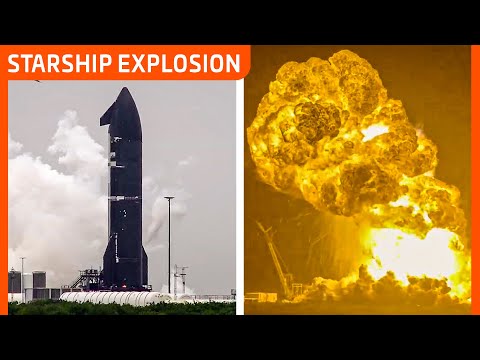Starship 36 explodes during static-fire test at SpaceX Starbase facility, Texas
Starship 36 exploded during a static-fire test at SpaceX’s Starbase facility in Texas at around 23:00 local time (LT) on June 18, 2025, destroying the prototype and delaying upcoming missions.
A static-fire test of SpaceX’s Starship prototype “Ship 36” ended in a catastrophic explosion at 23:00 LT on June 18, at the company’s Starbase testing grounds in Boca Chica, Texas. The test was part of preparations for the tenth Starship flight. SpaceX confirmed that all personnel were safe and that a safety perimeter was maintained throughout the operation.
According to SpaceX’s official statement, the vehicle experienced “a major anomaly” while on the test stand. They added that teams were “actively working to safe the test site and surrounding area in conjunction with local officials,” and that there were no injuries or hazards to local communities.
Local law enforcement and emergency services responded to the event. Cameron County officials confirmed that emergency protocols were enacted, but no injuries occurred.
This is a video of Massey's taken by boat this morning by the Raptor Roost. @RaptorRoostTX pic.twitter.com/m5u5J3aucN
— Base Camp Zero (@clwphoto1) June 19, 2025
The explosion was preceded by a large methane vent and followed by a fireball that shook homes in nearby areas. The blast generated a sustained fire that burned for more than an hour after the incident.
The test was conducted two days after Ship 36 had performed a single-engine static-fire on June 16, and followed a full cryogenic proof test on April 27. It was intended as part of a series of engine tests leading up to an integrated launch.
The explosion originated near the vehicle’s nose or header tanks, though no official cause has yet been released. The Federal Aviation Administration (FAA) is expected to initiate a formal mishap investigation.
SpaceX's Starship 36 suffered a catastrophic failure and exploded during a routine static fire test Wednesday night at Starbase, Texas. No injuries were reported. pic.twitter.com/bzLhWTHFWx
— Molly Ploofkins (@Mollyploofkins) June 19, 2025
The incident will delay the upcoming Starship Flight 10, originally targeted for late June. The test stand at Massey was also damaged in the blast, requiring inspection and repair before future use.
This marks the fourth major Starship failure in 2025. Starship Flights 7, 8, and 9 all ended in partial or complete loss of vehicle, continuing a pattern of high-risk testing aimed at rapid development of the launch system.
Feature image credit: NASA Space Flight
Reet is a science journalist and researcher with a keen focus on extreme weather, space phenomena, and climate-related issues. With a strong foundation in astronomy and a history of environmental activism, she approaches every story with a sharp scientific lens and a deep sense of purpose. Driven by a lifelong love for writing, and a curiosity about the universe, Reet brings urgency and insight to some of the most important scientific developments of our time.




Commenting rules and guidelines
We value the thoughts and opinions of our readers and welcome healthy discussions on our website. In order to maintain a respectful and positive community, we ask that all commenters follow these rules.